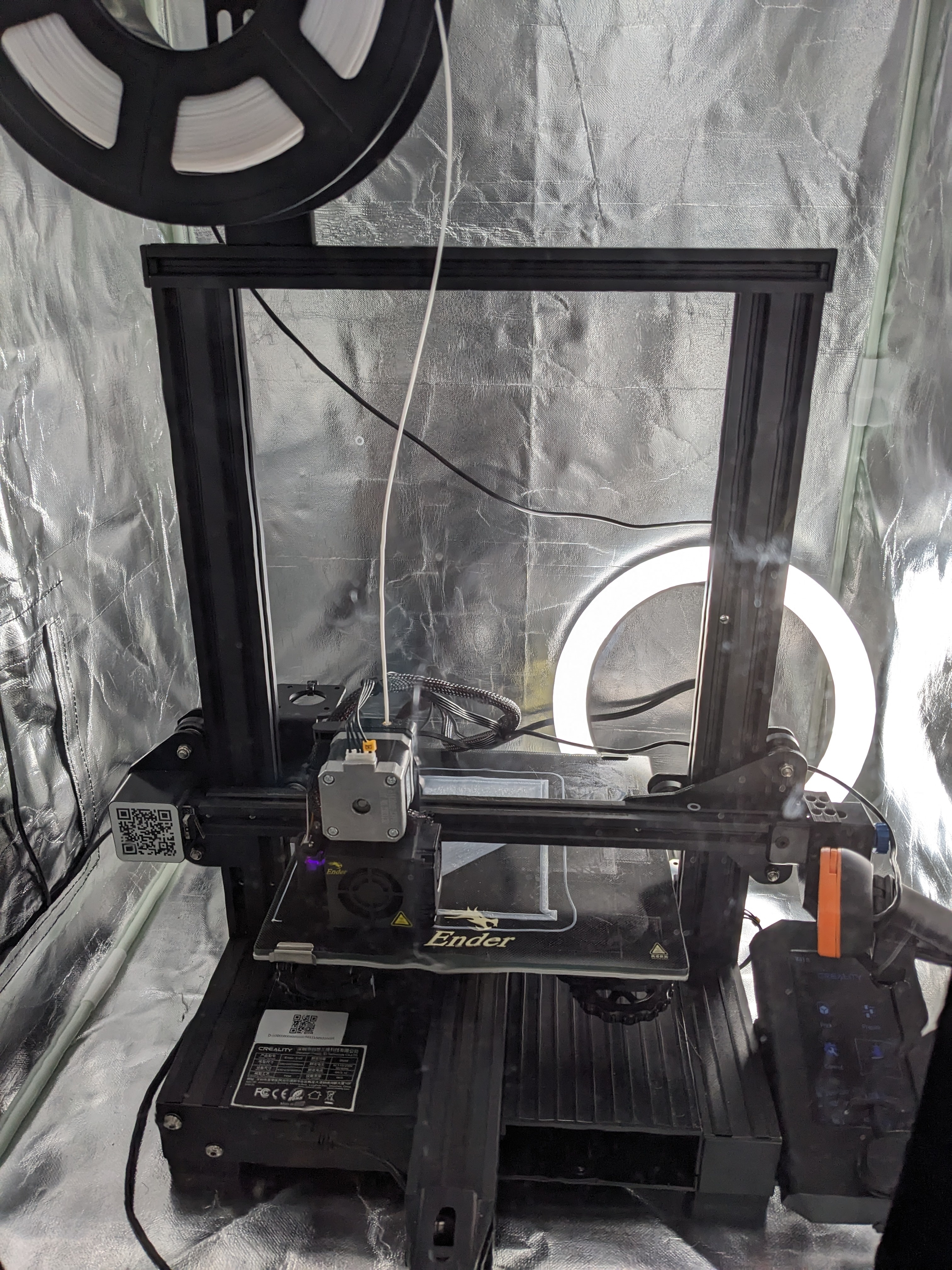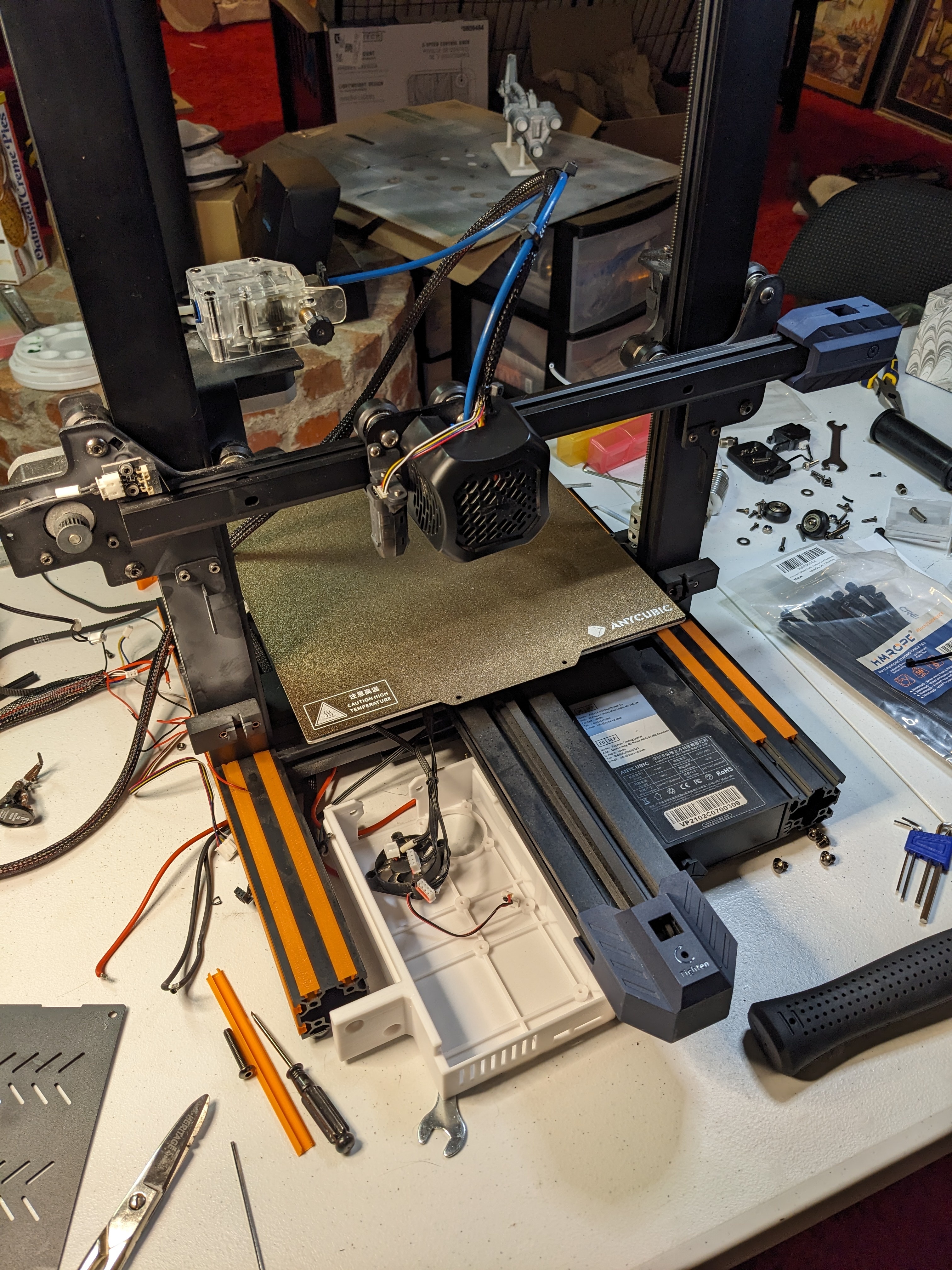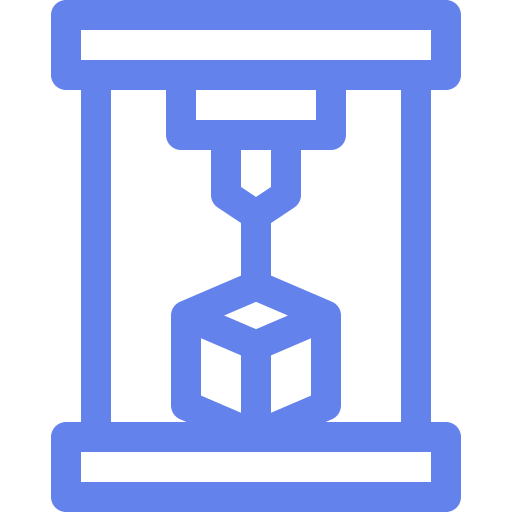Hey, I’m a complete newbie when it comes to 3D printing. I have a chance to pick up this printer second hand, and I was wondering what the community thinks of the product. Would this printer be decent for a beginner? Thanks!
I love my Ender3 V2. It’s a great workhorse. If you are in the United States you may be able to snag one from Microcenter for $100. It is a good entry point that you can upgrade as you go along. I have added a bl-touch (definitely get one) direct drive, and a dual z axis. But it was making great prints before the upgrades. Also since they are the most common printer parts are easy to find.
Have a ender3V2 as my first printer, buy it, hopefully no second hand issues, use it, enjoy it, but resist the urge to spend time and money upgrading, you want a better printer after running through a few spools, buy a better printer (sovol sv06, perhaps)
only ‘upgrade’ i’ve done is a filament guide and lots of time levelling the bed, frequently.
I might be a bit late with my answer, but overall the ender 3 is a decent beginner printer. I’ve had no major problems with mine.
You and others please note that there are 4 different models of the ender 3.
- ender 3: loud board and stock everything
- ender 3 v2, new screen, silent board, adjustment knobs for belts and a glass bed
- ender 3 neo. silent board, old screen, auto bed leveling (BL-Touch), glass bed
- ender 3 v2 neo: Basically a v2 + neo
IMO the neo is a sweet spot for beginners. It has most of the upgrades people do on their printers, while being cheaper than doing them yourself.
EDIT: just read that you’re buying used. Depending on the price the v2 would be completely fine. Just add bltouch later if you want.
I am the go-to guy for 3D printers for quite a few people. Everyone who has an Ender 3 had them up and running in a short time, and all of them printed out of the box without issues.
I had one guy who fell into the trap of buying every possible upgrade and it took a while for us to get it going with all the upgrades, but other than that, an Ender 3 is a solid first machine.
Sure, it’s not as great as some other machines out there, but these other machines don’t cost <€250 on Amazon.
Anything better than the Ender 3 v2 will get you into diminishing returns territory very fast.
It’s worth it if you have the time and willpower to invest in the machine. They can print ten jobs adequately and then your bed adhesion can go to hell out of nowhere on the eleventh and you have to spend some time troubleshooting it. There are fewer such headaches at higher price points, but no machine is going to print perfectly every time. I’d recommend making sure you’re able to monitor your print jobs either in person or remotely with a webcam so you make sure you’re not wasting loads of filament and having to clean up or replace parts in the event a print fails.
Ender-3 V2 is a solid entry level printer. I enjoy mine and once I put the “silent” board on it I could print nearly non-stop without any complaints from my wife or kids.
So the upgrades I would suggest are: BL-Touch/CR-Touch “Silent” control board
Nice to have: Dual gear extruder Higher quality PTFE tubing
I have a e3v2, and I already have more in upgrades in it than I paid initially for the printer, each one to “fix” an issue I was having - dual z to fix x gantry from sagging, microswiss NG extruder when my regular extruder broke, the “yellow springs” and now a cr touch as I was getting real sick of manual leveling after a year of use. If you buy that printer, you will learn a lot about how it works and how to fix it. It says you’re getting an automatic leveler, but take the time to learn how to manually level. The ABL helps but it’s not a magic bullet. Also, if the 2 rolls of filament you’re getting are open to the atmosphere you’ll want to make sure to dry them, otherwise you’ll learn a whole other aspect of 3d printing that will drive you nuts.
Ender3 is an outstanding entry point to the 3d printing hobby. It’s open source hardware, so no other printer has cheaper parts. And may be the most common 3d printer, so plentiful modification options and tutorials.
Where’s the source?
I don’t have one, but I heard that it is always a great entry point. It is an ender 3 with some improvements. There are lots of YT videos since it is a popular printer.
Here it is hard at work making a lid for a motherboard case. I have an Anycubic Vyper that broke so many times (strain gauge) that I am converting it to an Franken Ender 3.


Cool! Since you have firsthand experience, maybe you could give me an idea of whether it’s a good deal. I posted a comment with all the upgrades and inclusions and price above. Any insight would be much appreciated!
These usually go for $200 brand new at Microcenter. So as long as it is in good working order, you are getting all of those upgrades and filament for $25. I would be careful this may be a friend trying to trick you into the hobby!
Seconding what others have said. It’s a good starting printer you can usually find at a low price. It can be rather hands on tho.
So here’s what the deal looks like.
Upgrades:
- Direct drive with Sherpa mini-extruder
- Rapido hotend
- CRtouch auto-level
- SKR 3 main board
- PEI bed
- Silicone spacers
- Belted Z
- Klipper firmware
Includes
- Extra nozzles
- Original hotend
- Original main board
- 2 rolls of filament
225.44 USD
Good deal?
I have an Ender 3 V1, so take this advice with a grain of salt.
I can’t tell you if the deal is financially good or not, what I can tell you is what my printer is like and if it has problems.
I’ve had my Ender 3 since 2020, and it’s been both a reliable work horse, and a un-reliable eWaste depending on the week, and how much work I need to do on it.
Out of the box it will work well enough, but without a bed leveler it was difficult to get a good first layer. You have that so you pass the minimum hardware requirements. The other upgrade I bought for it was a silent board upgrade (which you might already have) and a all metal heat break. If you don’t have a all metal heat break, you will need a roll of PTFE Tubing since the end in the hotend will char and the filament will jam over time.
PEI Sheet is good, though if you print with high temps you may want a glass or a G-10 print bed. PEI Stick like Glue to PETG and will rip and destroy your bed.
As for my issues with Printing on the Ender 3. Well the Bowden system will cause for minor inconsistencies across the X-Axis. It took me years to find this out and another printer from Prusa to narrow this down, however it only impacts tiny parts of a print, and the variance is like ±0.005mm. Most people don’t need this level of accuracy so it’s fine, especially if it’s your first printer.
Another issue I have with the auto bed leveling is the accuracy on the level. It only gives you 2 decimal points of accuracy 0.01, however the properly level my bed I found I needed 3, so manual bed leveling might still be required for you. Since I am always too close to the bed, or no close enough while printing.
With my grievances aside (a good 3D printable model will account for a lot of these faults), I don’t hate my Ender 3. the CR-Touch allows me to use beds made out of other materials, rather than steel bed only that I get with the Prusa Mini. I’ve repaired this sucker more time than I can count, from belts to hot ends, to nozzles and more. And all the parts are easily obtainable from Amazon or even locally at my electronics store.
I personally consider the Ender 3 a hobbyist printer, I’ve personally expanded beyond printing for myself, so I needed something more reliable. But if you aren’t printing day in day out 365 days a year, then it’s a solid reliable machine which you will need to tinker with time to time, that is repairable with easily accessible parts. And for the price is cheaper than the alternative.
But there is a reason most print farms and printers use Prusa and (hoping for the long run for these folk) Bamboo Labs.








